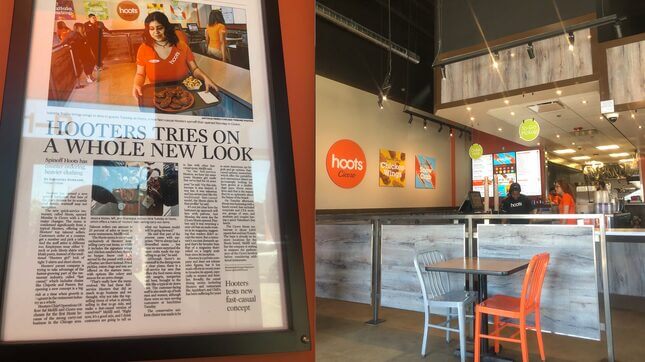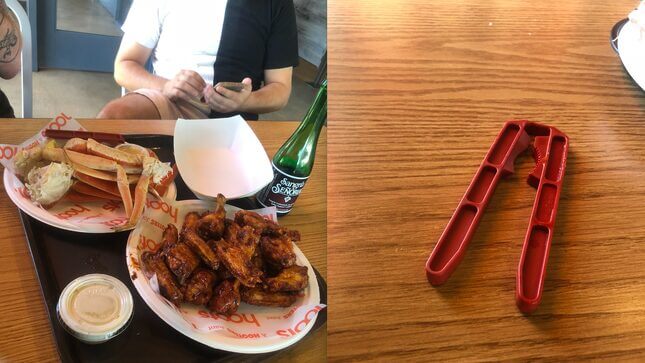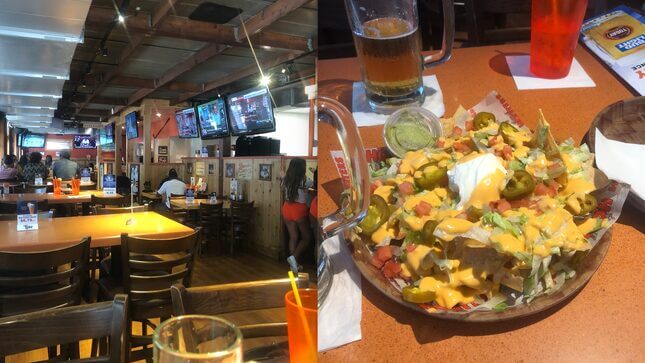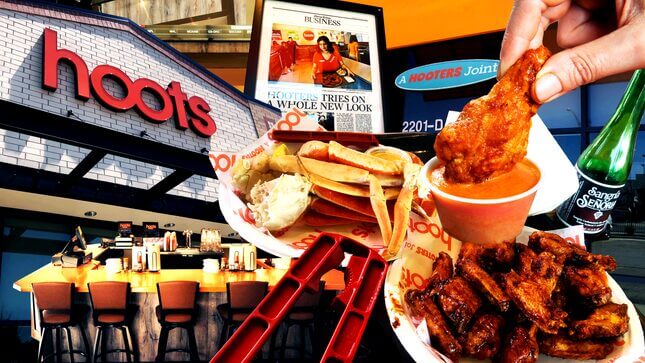
Graphic: Elena Scotti
As a teen, I yearned to be a mall rat; as a teen in Germany, that desire went mostly unfulfilled. There were no malls in my immediate area; the closest shopping arena to sulk in was an indoor center in Neunkirchen, a moderately-sized municipality known (to me) for its H&M and (to everyone else) for its train station, an unremarkable building haunted by its post-war architecture. Despite its lacking, the tiny town was the only place in our corner of Saarland to shop that didn’t require hitting the Autobahn, and its crown jewel was an “Amerikanische sportsbar,” a saturated orange bootleg-Hooters called Chillers. Naturally, I went there a lot.
Something about hanging out in a breastaurant that was so obviously a parody felt subversive: I was choosing to enter and occupy space in a room built
to captivate the male gaze. Doing so, I felt, challenged the institutions’ sordid goal of turning dudes on in front of giant plates of microwaved meats. That, I was confident, was feminism.
It wasn’t. To be honest, Chillers was simply a convenient place to eat bowling alley-quality baby foods, not unlike a slutty Olive Garden. As I grew older, I realized I was full of shit: going to Chillers simply fueled my rebellious desire to do something that would disappoint my parents if they ever found out. (They never did.)
That, I was confident, was feminism. It wasn’t.
But Hooters has always held an unjustifiable place in my heart—an endearment that’s bypassed irony to the point of active embarrassment. So when I heard that the people behind Hooters had launched offshoot, Hoots, a refined family-friendly joint designed for the millennial palate, I was intrigued.
There are a number of differences between the two chains. Unlike the cave-reminiscent Hooters, Hoots is bright with windowed walls, though the color scheme is nearly identical to its namesake restaurant. Unlike Hooters, the Hoots logo is all lowercase, though the the double-o’s still look like boobs. Unlike Hooters, Hoots is counter-service only. Unlike Hooters, men work in the restaurant. And, most notably, unlike Hooters, no breasts are involved in the Hoots experience, as both men and women employees wear modest, conservative uniforms.
What’s a breastaurant without breasts? After getting stranded in Chicago last month, and learning that Hoots’ first and only outpost was located in Cicero, Illinois, a nearby suburb of Chi-town, I needed to know.
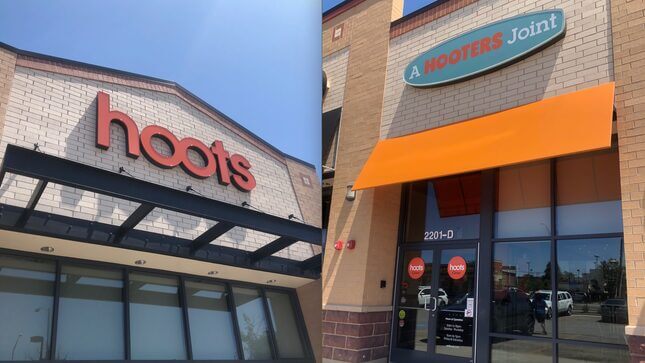
Hoots is located in a nondescript strip mall, around the corner from a Popeyes. Above the windowed doors are the giant orange letters “hoots,” and a surfboard-shaped blue-grey sign that reads, “A HOOTERS Joint.” Though I arrived to Hoots firmly in the lunch hour there wasn’t a patron in sight, save for a single older gentlemen who sat solemnly, staring at a muted hockey game on a TV hung slightly too high for his cranial comfort.
What’s a breastaurant without breasts?
I entered Hoots with one ambition: I wanted to understand why the popular restaurant-bar chain Hooters, one so synonymous with skimpy uniforms, ballooning bosoms, and American sleaze, would launch an alternative establishment where employees are modestly clothed, mixed gendered. The management argued that slightly improved food, would be enough to lure a new generation to the Hooters brand. I was skeptical. As anyone who has ever consumed anything at a Hooters will tell you—no one really goes for nourishment. And if they say they’re in it for the wings, don’t believe them.
-

-

-

-

-

-

-

-

-

-

-

-

-

-

-

-

-

-

-

-

-

-

-

-

-

-

-

-

-

-

-

-

-

-

-

-

-

-

-

-

